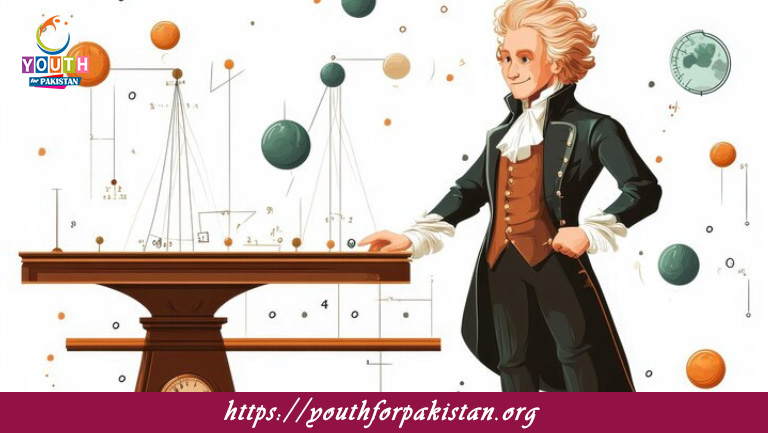Newton’s First Law Of Motion MDCAT MCQs with Answers

Welcome to the Newton’s First Law Of Motion MDCAT MCQs with Answers. In this post, we have shared Newton’s First Law Of Motion Multiple Choice Questions and Answers for PMC MDCAT 2024. Each question in MDCAT Physics offers a chance to enhance your knowledge regarding Newton’s First Law Of Motion MCQs in this MDCAT Online Test.
Newton’s First Law Of Motion MDCAT MCQs Test Preparations
Newton’s First Law of Motion is also known as the law of:
a) Acceleration
b) Inertia
c) Action and Reaction
d) Universal Gravitation
According to Newton’s First Law, an object at rest will remain at rest unless acted upon by:
a) A balanced force
b) An unbalanced force
c) A normal force
d) A frictional force
An object moving with constant velocity will:
a) Accelerate
b) Change direction
c) Continue moving in a straight line
d) Eventually stop
If no external force acts on a moving object, its velocity will:
a) Change
b) Remain constant
c) Decrease
d) Become zero
A stationary book on a table remains at rest due to:
a) Gravity
b) Inertia
c) Friction
d) Air resistance
According to Newton’s First Law, which of the following objects will continue in uniform motion unless acted upon by an external force?
a) A car in a crash
b) A rocket in space
c) A car going uphill
d) A book on a moving bus
An object in motion will remain in motion if:
a) There are no external forces
b) The surface is smooth
c) The object is light
d) The object is heavy
If you slide a book across a table, it eventually stops due to:
a) Its inertia
b) The table’s push
c) Air resistance
d) Friction
Newton’s First Law implies that an object will not accelerate unless:
a) Its mass changes
b) An unbalanced force acts on it
c) It is on a slope
d) It is in a vacuum
An astronaut in space will continue to move in the same direction and speed unless:
a) The space station exerts a force
b) The astronaut pushes off from something
c) There is air resistance
d) There is a change in mass
An object that experiences no net force will:
a) Change its velocity
b) Accelerate
c) Continue its current state of motion
d) Experience a change in direction
When a car suddenly stops, passengers feel pushed forward due to:
a) The car’s acceleration
b) The inertia of their bodies
c) The friction of the seat
d) Air resistance
If you push a stationary object and it doesn’t move, it is because:
a) The applied force is too weak
b) The object has no inertia
c) The forces are balanced
d) The object is in a vacuum
The reason a passenger lurches forward when a car brakes suddenly is:
a) Newton’s Second Law
b) Newton’s First Law
c) Newton’s Third Law
d) The force of gravity
An object that is not accelerating has:
a) A net force acting on it
b) No forces acting on it
c) Balanced forces acting on it
d) Unbalanced forces acting on it
A bicycle that is coasting along a flat road will eventually slow down due to:
a) Its inertia
b) Balanced forces
c) Air resistance and friction
d) Constant applied force
In the absence of air resistance, a dropped ball will:
a) Fall at a constant speed
b) Accelerate due to gravity
c) Remain stationary
d) Move horizontally
An object that remains at rest in the absence of external forces demonstrates:
a) Acceleration
b) Inertia
c) Gravitational force
d) Friction
An object moving in space with no external forces will:
a) Slow down over time
b) Stop moving
c) Continue moving at constant velocity
d) Change direction
A book on a table remains stationary due to:
a) Its inertia and the table’s support force
b) Air resistance
c) The force of gravity only
d) The force applied to it
If you pull a cart with a constant force on a frictionless surface, the cart:
a) Will continue moving at constant velocity
b) Will eventually stop
c) Will accelerate
d) Will remain stationary
When you push an object and it does not move, it is because:
a) The object is too heavy
b) The applied force is not sufficient to overcome friction
c) The object has no inertia
d) The object is in free fall
A soccer ball kicked into the air will eventually stop and fall back due to:
a) Its inertia
b) Air resistance and gravity
c) The applied force
d) The lack of external forces
A moving car continues to travel at constant speed if no external forces act on it because of:
a) Inertia
b) Friction
c) Applied force
d) Gravitational pull
An object at rest will remain at rest unless:
a) A net external force acts upon it
b) It is in motion
c) It experiences friction
d) It is in a vacuum
The tendency of an object to resist changes in its state of motion is known as:
a) Acceleration
b) Force
c) Inertia
d) Velocity
A book on a car seat moves forward when the car suddenly accelerates because:
a) The book’s inertia keeps it moving at the same speed
b) The car exerts a force on the book
c) Air resistance pushes the book
d) Gravity pulls the book forward
A stationary object will stay stationary if:
a) No net force is acting on it
b) It is in a moving vehicle
c) It is in a vacuum
d) It experiences constant force
The reason you feel pushed back into your seat when a car accelerates is due to:
a) The car’s acceleration
b) Your inertia
c) Air resistance
d) The car’s braking system
An object in uniform motion will continue in uniform motion if:
a) No external forces are acting on it
b) It is in a frictionless environment
c) It is on a rough surface
d) It is accelerating
A person standing still in an elevator feels as if they are pushed upward when the elevator accelerates:
a) Due to inertia
b) Due to a normal force
c) Due to gravity
d) Due to air resistance
A ball rolling on a flat surface will continue to roll if:
a) No external forces act on it
b) The surface is rough
c) The ball is pushed
d) The ball is in free fall
The law that describes an object’s resistance to changes in its motion is:
a) Newton’s First Law
b) Newton’s Second Law
c) Newton’s Third Law
d) Law of Universal Gravitation
If a cart in space is moving with constant velocity, it will:
a) Continue moving indefinitely unless acted upon by an external force
b) Slow down over time
c) Change direction
d) Stop moving
When a car suddenly brakes, the passengers experience a forward motion due to:
a) Their inertia
b) The friction of the car seat
c) The force of the brakes
d) The air resistance
A falling object in the absence of air resistance will:
a) Accelerate at a constant rate
b) Fall at a constant speed
c) Remain stationary
d) Move horizontally
An object that is moving with constant speed in a straight line will continue to do so if:
a) No net external force acts on it
b) The object is in a vacuum
c) The surface is smooth
d) It is acted upon by gravity
An object that is not accelerating indicates:
a) Balanced forces are acting on it
b) Unbalanced forces are acting on it
c) It is in free fall
d) It is moving with constant acceleration
When a ball is thrown straight up, it will eventually stop rising and begin to fall due to:
a) Its inertia
b) Air resistance and gravity
c) The initial force applied
d) The lack of friction
A person in an airplane feels pushed back into their seat during takeoff because:
a) The airplane accelerates forward
b) The seat is not supportive
c) The airplane is moving horizontally
d) The air pressure changes
If you are interested to enhance your knowledge regarding Physics, Chemistry, Computer, and Biology please click on the link of each category, you will be redirected to dedicated website for each category.





